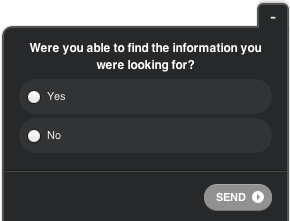With the explosion of content marketing in recent years, it’s not surprising that inbound marketers are realizing the importance of creating interesting content that appeals to their target market. However, most are falling short in using that content to drive measurable interest in their core offering.

Are you caught in the trap of creating more content marketing without the corresponding increase in quantifiable results? If you’re currently reading this and nodding your head, repeat after me – “Hakuna Matata.”
The Swahili phrase made famous by the movie Lion King means “no worries.” Content marketing can be extremely frustrating but all hope is not lost.
The solution requires a deep reserve of creativity but not necessarily a deep reserve of technical skills. The creativity needed is the type that allows you to bridge the gap between compelling content and your core offering.
For example, we recently launched the The Beginner’s Guide to Conversion Rate Optimization (CRO Guide). In just a couple of weeks, it has received over 25,000 page views without any marketing dollars spent to promote it. While all of this sounds great, is it actually helping to bridge the gap to drive interest in purchasing our software?
Turns out that it has been very effective. In fact our sales people have had to quickly adjust their demos based on the influx of a new type of demand.
So how did we do it? Well, not surprisingly we turned to our own product as part of the solution. The other part of the solution was understanding the key referral sources and the immediate needs of the people that were visiting the CRO Guide.
A large proportion of the visitors to the CRO Guide were referred through the #1 position we received in the Moz semi-monthly newsletter. Knowing that Moz readers often specialize in SEO, we figured many of them would be interested in Google’s recent confirmation that they would be encrypting all referring keyword data. In other words, SEO specialists were about to face major challenges in their daily jobs.
Fortunately we had just written a blog post explaining how Qualaroo can help overcome this new challenge. So our objective was to get these readers from the CRO Guide (which is purposely very neutral about Qualaroo) to an article that presents Qualaroo as an important solution to a problem they were likely experiencing.
Here’s how we did it. When a user went to exit the CRO Guide, we presented them with the simple yes/no question below using Qualaroo.

While the average click rate on a banner across the web is only around .2%, nearly 16% of our viewers answered this timely question. And about 70% of those people then clicked on one of the adaptive call-to-action screens that followed.
That works out to over 11% of the people on the CRO Guide clicking over to a blog post that clearly positioned Qualaroo as a solution to their problem. And not surprisingly, many of them opted to take a free trial of the software.
Bridging the gap between compelling content to your core offering takes some creative inspiration – but if you have installed Qualaroo, at least you’ll be able to quickly test your inspiration to see if it works. While this makes life much easier, we can’t quite promise that you’ll have “no worries for the rest of your days.”
Hakuna Matata.
Everette Taylor
 Tips
Tips
We’d love to hear your tips & suggestions on this article!
FREE. All Features. FOREVER!
Try our Forever FREE account with all premium features!

 We'd love your feedback!
We'd love your feedback! Thanks for your feedback!
Thanks for your feedback!







